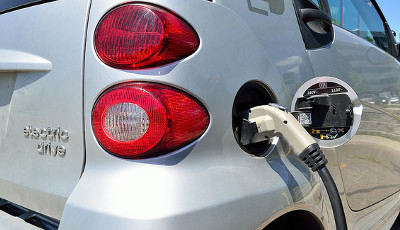80% price drop in EV batteries
February 09, 2017
on
on

The cost of battery packs for electric vehicles has fallen nearly 80% since 2010. That downward trajectory is expected to continue over the coming years. Since the battery makes up 35 to 50% of the production cost of an EV, driving electric will become much cheaper. EVs are increasingly competing on price with internal combustion engine cars. When are they ready to push ICE off the road?
The fossil fuel industry seems confident mass adoption of electric driving is still a long way off. BP predicts there’ll be a 100 million EVs on the road in 2035, constituting a 6% market share in road transport. The International Energy Agency is slightly more optimistic with a projection of between 100 and 140 million EVs in 2030.
These figures do not bode well for the world. Transportation is responsible for 14% global of greenhouse gas emissions, most of which is produced by road transport. Moreover, traffic is the primary source of urban air pollution.
EV takes in 2020
But there is hope. A new study by the Carbon Tracker Initiative has a far more positive outlook on the speed of EV market penetration. It predicts EVs will reach price parity with ICE vehicles as soon as 2020. Between then and 2030 electric driving will take 19-21% of the market share. These numbers aren’t the result of wishful thinking but founded on two basic assumptions:
1. Predictive models should be based on up-to-date data about the falling costs of technology, and
2. Countries will keep the individual pledges they’ve made in the Paris Agreement.
The fossil fuel industry seems confident mass adoption of electric driving is still a long way off. BP predicts there’ll be a 100 million EVs on the road in 2035, constituting a 6% market share in road transport. The International Energy Agency is slightly more optimistic with a projection of between 100 and 140 million EVs in 2030.
These figures do not bode well for the world. Transportation is responsible for 14% global of greenhouse gas emissions, most of which is produced by road transport. Moreover, traffic is the primary source of urban air pollution.
Subscribe
Tag alert: Subscribe to the tag Elektor Energy and you will receive an e-mail as soon as a new item about it is published on our website! EV takes in 2020
But there is hope. A new study by the Carbon Tracker Initiative has a far more positive outlook on the speed of EV market penetration. It predicts EVs will reach price parity with ICE vehicles as soon as 2020. Between then and 2030 electric driving will take 19-21% of the market share. These numbers aren’t the result of wishful thinking but founded on two basic assumptions:
1. Predictive models should be based on up-to-date data about the falling costs of technology, and
2. Countries will keep the individual pledges they’ve made in the Paris Agreement.
Read full article
Hide full article


Discussion (1 comment)